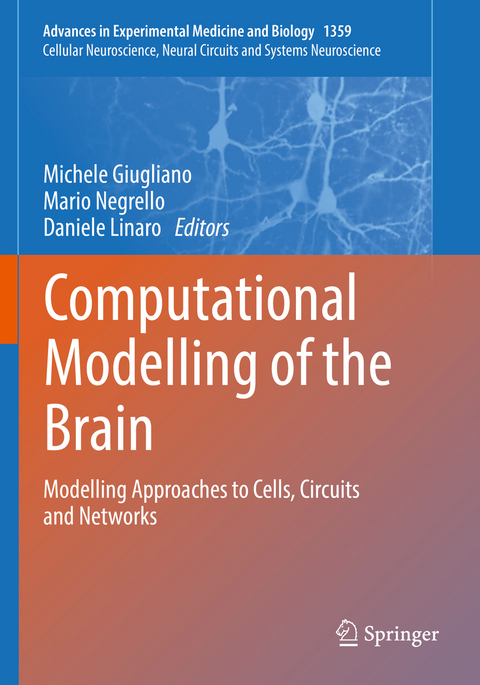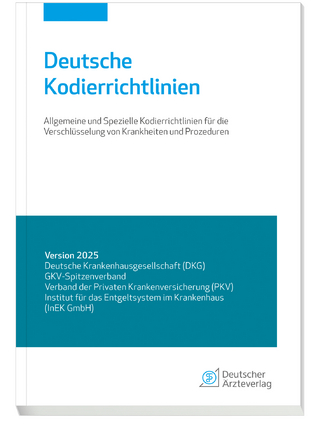
Computational Modelling of the Brain
Springer International Publishing (Verlag)
978-3-030-89441-2 (ISBN)
This volume offers an up-to-date overview of essential concepts and modern approaches to computational modelling, including the use of experimental techniques related to or directly inspired by them. The book introduces, at increasing levels of complexity and with the non-specialist in mind, state-of-the-art topics ranging from single-cell and molecular descriptions to circuits and networks.
Four major themes are covered, including subcellular modelling of ion channels and signalling pathways at the molecular level, single-cell modelling at different levels of spatial complexity, network modelling from local microcircuits to large-scale simulations of entire brain areas and practical examples. Each chapter presents a systematic overview of a specific topic and provides the reader with the fundamental tools needed to understand the computational modelling of neural dynamics.
This book is aimed at experimenters and graduate students with little or no prior knowledge of modelling who are interested in learning about computational models from the single molecule to the inter-areal communication of brain structures. The book will appeal to computational neuroscientists, engineers, physicists and mathematicians interested in contributing to the field of neuroscience.
Chapters 6, 10 and 11 are available open access under a Creative Commons Attribution 4.0 International License via link.springer.com.
lt;p>Michele Giugliano graduated in Electronic Engineering in 1997 at the Univ. of Genova (Italy), and received his PhD in Bioengineering and Computational Neuroscience in 2001 from the Polytechnic of Milan (Italy).
He then received an award from the Human Frontiers Science Program Organisation to pursue postdoctoral training in experimental cell electrophysiology at the Inst. of Physiology of the Univ. of Bern (Switzerland), working with Prof. Hans-Rudolf Luescher and Prof. Stefano Fusi.
In 2005, he joined as junior group leader the experimental laboratory of Prof. Henry Markram at the Brain Mind Institute of the Swiss Federal Institute of Technology of Lausanne. In 2008 he was appointed faculty at the University of Antwerpen (Belgium), taking over the Theoretical Neurobiology lab founded by Prof. Erik De Schutter and extending its scope to interdisciplinary research in experimental neuroscience and neuroengineering. During the period 2013-2015, he was also visiting scientist at the Neuroelectronics Flanders Institute at IMEC, Leuven.From 2016 to 2019, he was full professor in Antwerp and he has served visiting academic positions at the University of Sheffield (UK). Today, since 2019, he has been Principal Investigator and lab director at the International School of Advanced Studies (SISSA) of Trieste, Italy, where he relocated his team.
Since 2008, Michele Giugliano has taught Computational Neurobiology to undergraduate and graduate students from a variety of backgrounds in Life Sciences, Biomedical Sciences, Physics, and Computer Science.
Michele Giugliano's research activities lays at the interface among cell electrophysiology, computational neuroscience, and neurotechnology. He discovered the rapid time-scales associated to neuronal excitability in the rodent and human cortex, and pioneered the use of nanomaterials for building interfaces between artificial devices and the neural tissue.
Mario Negrello obtained a mechanical engineering degree in Brazil (1997), and later after a period in the industry (VW, 1999-2004) obtained his Masters degree (2006) and PhD (summa cum laude) in Cognitive Science at the University of Osnabrück in Germany, in 2009. At the Fraunhofer Institute in Sankt Augustin (Germany) for Intelligent Dynamics and Autonomous Systems, he researched artificial evolution of neural network controllers for autonomous robots (2007/08). This work was awarded a scholarship by the International Society of Neural Networks (INNS) to sponsor an eight-month period (2008/09) as a visiting researcher at the Computational Synthesis Lab at the Aerospace Engineering department of the Cornell University in USA (with Hod Lipson). In his first post doctoral period he acted a group leader at the Computational Neuroscience laboratory at the Okinawa Institute of Science and Technology (with Erik De Schutter). He now is assistant professor in computational neuroscience in the Erasmus Medical Center in Rotterdam, where he combines empirical research and computational models (dept. head Chris De Zeeuw). He is also head of the Neurocomputing lab in Rotterdam. Mario Negrello has published in the fields of Machine Learning, Cognitive Robotics, Artificial Life, Evolutionary Robotics, Neuroethology and Neuroscience, as well as a monograph published by Springer US in the Series Cognitive and Neural systems entitled Invariants of Behavior (2012).
Daniele Linaro received his MSc in Electronic Engineering from the Univ. of Genoa (Italy) in 2007 and a PhD in Electrical Engineering from the same university in 2011.
In the same year, he was awarded a fellowship from the Flemish Research Foundation - FWO to conduct postdoctoral work in the Laboratory of Theoretical Neurobiology and Neuroengineering at the University of Antwerp, under the supervision of Prof. Michele Giugliano, where he used dynamic-clamp to elucidate the computational capabiliti
PART I. Cellular Scale.- Chapter 1. Modelling Neurons in 3D at the Nanoscale.- Chapter 2. Modelling Dendrites and Spatially-Distributed Neuronal Membrane Properties.- Chapter 3. A User's Guide to Generalized Integrate-and-Fire Models.- Chapter 4. Neuron-glia Interactions and Brain Circuits.- Chapter 5. Short-term Synaptic Plasticity: Microscopic Modelling and (some) Computational Implications.- PART II. Molecular Scale.- Chapter 6. The Mean Field Approach for Populations of Spiking Neurons.- Chapter 7. Multidimensional Dynamical Systems with Noise.- Chapter 8. Computing Extracellular Electric Potentials from Neuronal Simulations.- Chapter 9. Bringing Anatomical Information into Neuronal Network Models.- PART III. Network Scale.- Chapter 10. Computational Concepts for Reconstructing and Simulating Brain Tissue.- Chapter 11. Reconstruction of the Hippocampus.- Chapter 12. Challenges for Place and Grid Cell Models.- Chapter 13. Whole-Brain Modelling: Past, Present, and Future.
| Erscheinungsdatum | 29.04.2023 |
|---|---|
| Reihe/Serie | Advances in Experimental Medicine and Biology | Cellular Neuroscience, Neural Circuits and Systems Neuroscience |
| Zusatzinfo | XII, 359 p. 115 illus., 94 illus. in color. |
| Verlagsort | Cham |
| Sprache | englisch |
| Maße | 178 x 254 mm |
| Gewicht | 706 g |
| Themenwelt | Mathematik / Informatik ► Informatik ► Theorie / Studium |
| Informatik ► Weitere Themen ► Bioinformatik | |
| Medizin / Pharmazie ► Studium | |
| Naturwissenschaften ► Biologie ► Humanbiologie | |
| Schlagworte | Computational Neuroscience • ion channels • Mathematical Models • neurons • Simulation • spiking neural networks |
| ISBN-10 | 3-030-89441-X / 303089441X |
| ISBN-13 | 978-3-030-89441-2 / 9783030894412 |
| Zustand | Neuware |
| Informationen gemäß Produktsicherheitsverordnung (GPSR) | |
| Haben Sie eine Frage zum Produkt? |
aus dem Bereich


